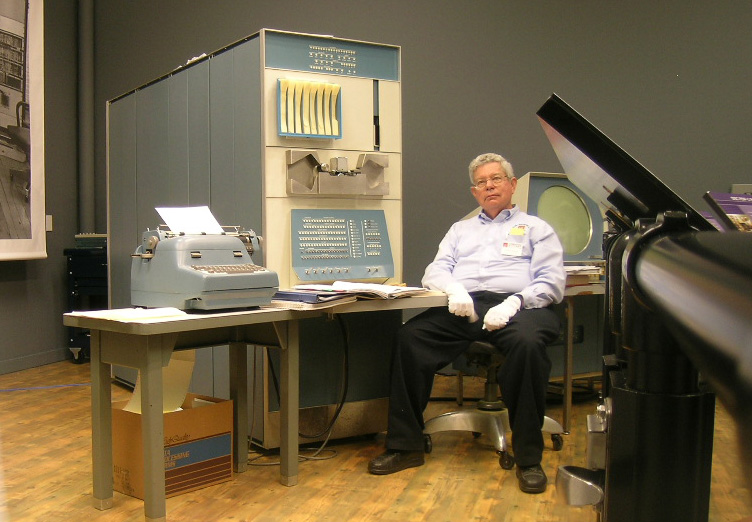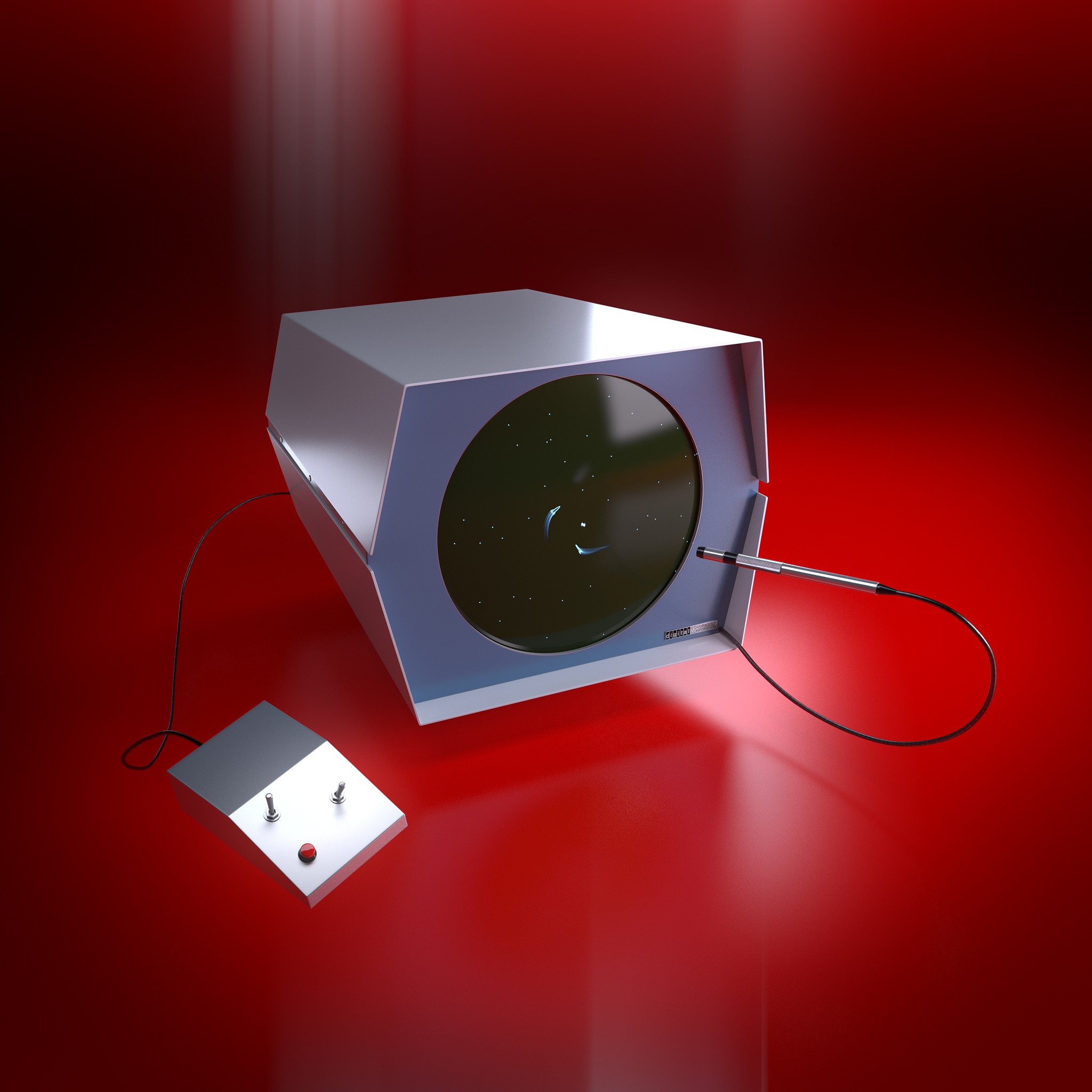The genesis of PC gaming: the PDP-1 and Spacewar!

Photo of the PDP-1 via Flickr user cat_collector
Bill Loguidice is the author of multiple books on gaming history, including Vintage Game Consoles: An Inside Look at Apple, Atari, Commodore, Nintendo, and the Greatest Gaming Platforms of All Time. We asked him to write about one of the most important pieces of hardware in computer history, and how that hardware facilitated the dawn of PC gaming.
The launch of the Digital Equipment Corporation PDP-1 (Programmed Data Processor-1) minicomputer in 1959 is said to have marked a radical shift in computer design philosophy. Ostensibly the first computer developed around user interaction and affordability, the PDP-1 was a truly personal computer when the idea of something like a PC eluded even the best minds in science fiction.
It’s also the father of computer gaming: in 1962, a whole decade before Pong turned videogames into a phenomenon, a little game called Spacewar! became the PDP-1’s star attraction.
The cusp of the minicomputer era
DEC built the PDP-1 as a single address, single instruction, stored program computer with a magnetic core memory and full parallel processing. This translated to a computation rate of 100,000 additions per second, which was more than twice as fast as many other, often larger computers of its day. For comparison, an average PC today can easily average 5 billion additions per second.
Even without the benefit of integrated circuits, the PDP-1 was still impressive for its time: it occupied just 17 square feet of floor space across its four equipment frames, which included an operator’s station. While the PDP-1 was by no means diminutive, in comparison to the era’s larger mainframe computers, which also required the type of specialized air conditioning, ventilation, and electrical accommodations that DEC’s computer eschewed, its “minicomputer” moniker was well earned, foreshadowing the logical evolution to microcomputers.
The PDP-1’s basic configuration, which cost $120,000 (nearly $1 million in today’s dollars), consisted of a large rectangular metal cabinet with blue accents roughly the size of three refrigerators stacked back-to-back. This cabinet housed the PDP-1’s four equipment frames, which contained all of its processing power. The frame was attached to a standard work desk, which could be easily expanded as more accessories were added.
Keep up to date with the most important stories and the best deals, as picked by the PC Gamer team.

Photo via flickr user Alex Handy.
Embedded in the front of the frame was a console with six operating buttons, three registers of toggle switches, and 20 indicator lights. Above the console was a punched tape reader, with a maximum read speed of 400 lines per second when processing the perforations in the paper tape that represented data. Rounding out the PDP-1’s standard package was a modified IBM Model B alphanumeric electric typewriter, with switches and solenoids inside the typewriter allowing for both read and write access to the PDP-1’s processor.
The PDP-1 was also surprisingly expandable. Since space was provided for additional gates to, and buffers from, the In-Out Register, much like today’s PCs, it was relatively easy to add new external equipment as the need arose. Optional equipment included magnetic tape, a light pen, line printer, punched cards, and a real-time clock.
The PDP-1’s specifications may be laughably antiquated today, but for much of the 1960s, the four dozen or so machines that DEC produced embodied the limitless possibilities only hinted at by other Space Age technologies. Despite their limited numbers, this minicomputer helped usher in a new era of expanded access to what were previously special purpose devices with precious few computing cycles available for true experimentation. Inspired engineers would soon create prototypical versions of the type of software taken for granted today, including programming environments, text editors, music and sound generators, and, perhaps most significantly, games.
Specifically, Spacewar!.

Begun, the space wars have
While there were attempts at computer games before Spacewar!—though none on a minicomputer—most were simple simulations of real world classics, like tic-tac-toe, checkers, chess, mazes, or tennis. As the PDP-1 was the epitome of Space Age technology, it was only natural that it birthed a unique game set in limitless space.
The creators of Spacewar! were students and faculty at the Massachusetts Institute of Technology (MIT), which by the 1960s was heavily invested in the burgeoning disciplines of computer science and engineering. Initially conceived by Steve “Slug” Russell, Martin “Shag” Graetz, and Wayne Wiitanen in 1961, with later contributions from Alan Kotok, Dan Edwards, and Peter Samson, Spacewar! was the result of brilliant engineering and hundreds of hours of hard work.
The team’s initial goal was to create a program that utilized and pushed as many of the PDP-1’s unique resources as possible. As today, it was decided that the best way to accomplish that goal was with a game. Even with the PDP-1’s impressive capabilities, limits were often reached, prompting additional innovations.

A render of the PDP-1's monitor and control box, courtesy of artist Carlos Matias.
For example, while Spacewar! controlled just fine from the PDP-1’s console switches, the CRT was off to one side, giving one player a visual advantage. Added to the fact that excited players could accidentally damage the operator console in the heat of battle, a separate control device was conceived. Little more than a wood box with a Bakelite (early plastic) top, its two double-throw switches and single button allowed for more precise control and gave even the most aggressive players a safe and equally comfortable distance from the on-screen action.
Spacewar!’s gameplay was incredibly sophisticated and ambitious, pitting two spaceships against each other in an armed deathmatch around a star that exhibited gravitational effects on the two craft. Each player adjusted each respective craft’s rotation, thrust, torpedo fire, and hyperspace (a random, evasive screen jump that might cause the player’s ship to explode).
Over the years, the game was improved upon many times and inspired countless clones and spiritual successors, becoming a future mainstay on other large computers, at the arcade, on home videogame systems, and of course, on home computers. If you've ever played Computer Space or Asteroids, some of the earliest successful arcade games, you've played a game directly influenced by Spacewar!.
But beyond the countless Spacewar! clones of the 70s and 80s, the PDP-1's landmark program established game conventions we're all familiar with today. Spacewar! introduced such standards as real-time action, weapons, special moves, variable game conditions, physics, and a self-contained, virtual world. It demonstrated that computers were good for far more than just high speed calculations, and represented the future of entertainment that we now live in.

